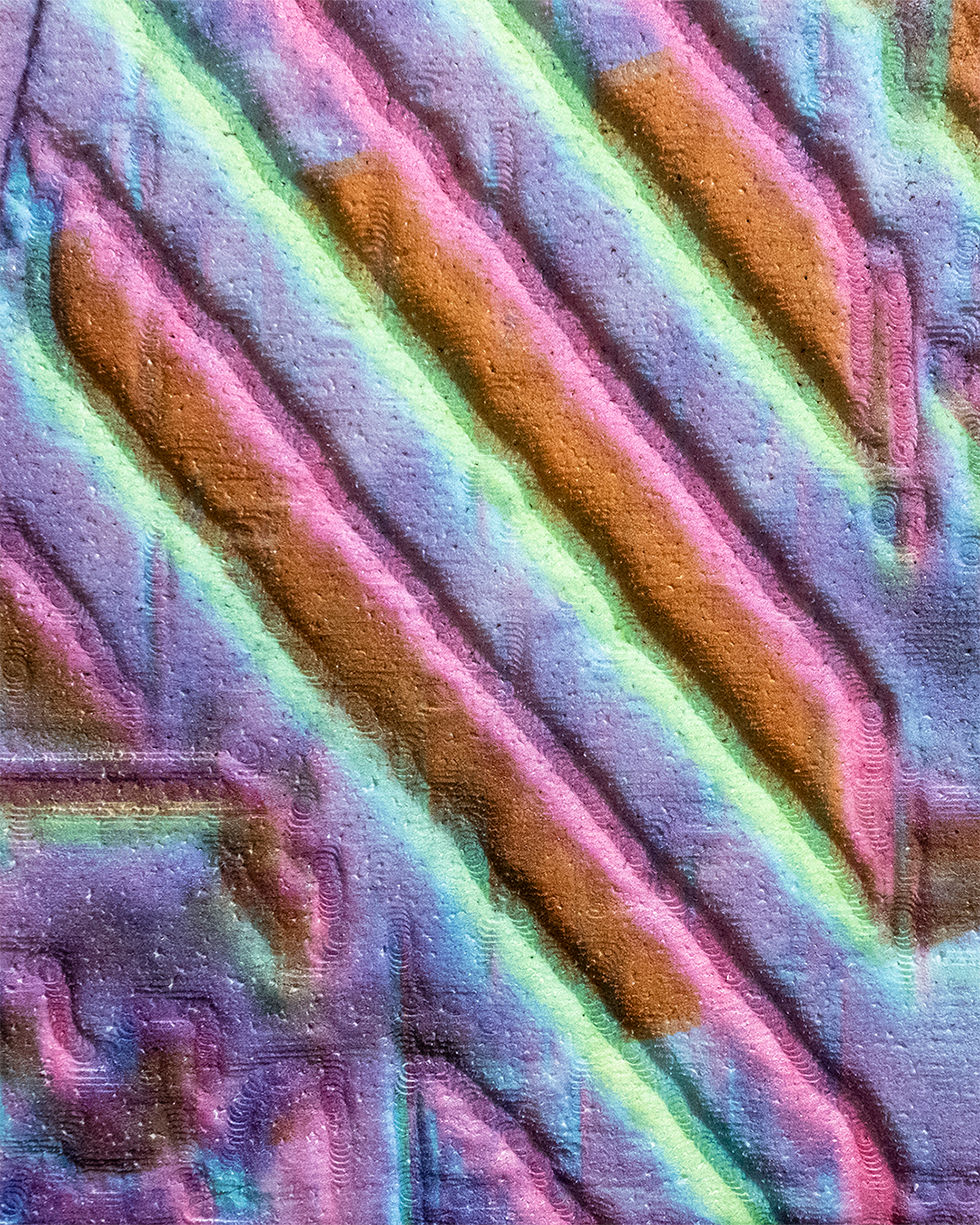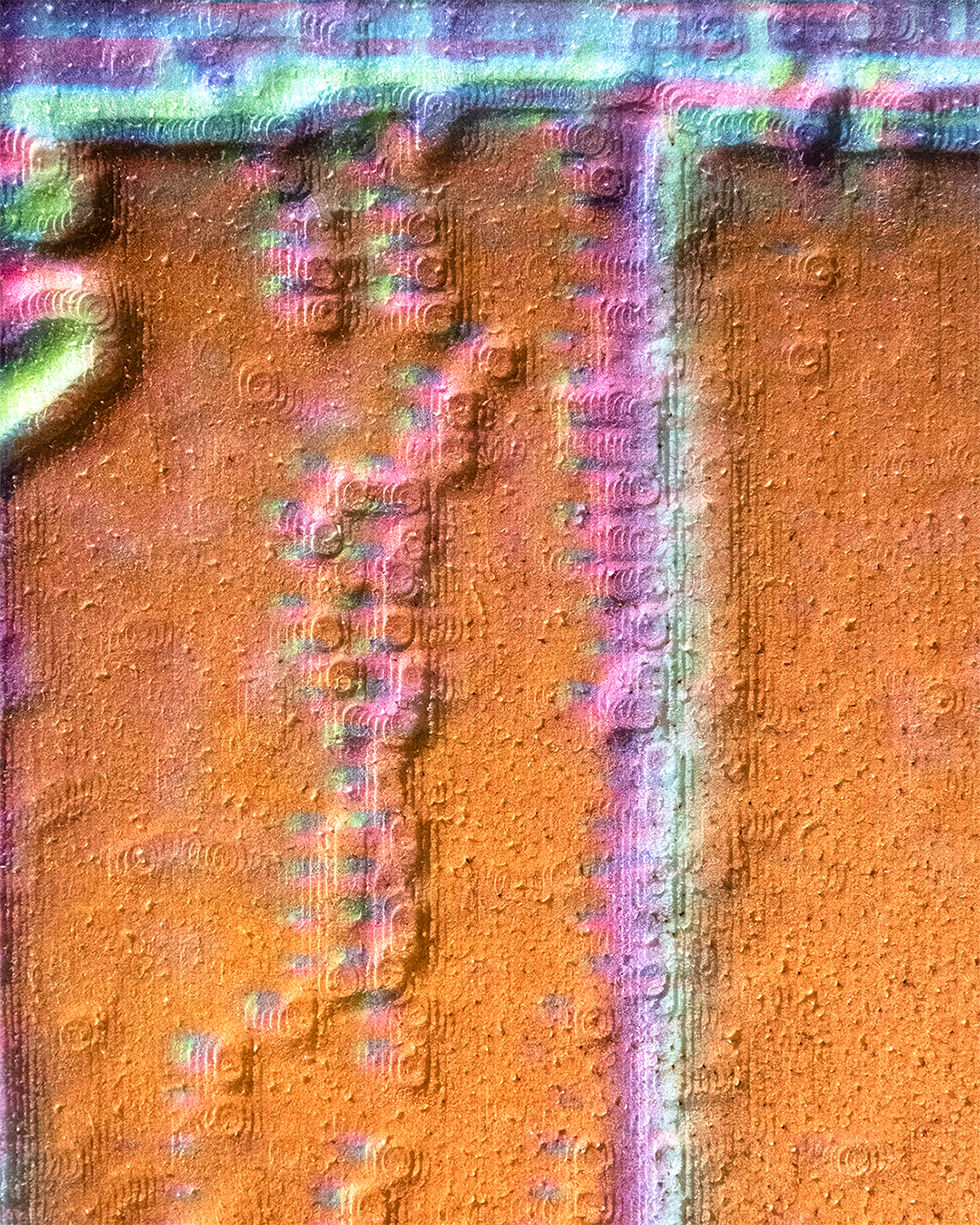Arctic LiDAR
< Back
See also:

Type: 360º Video Installation | Year: 2018-2019
ARCTIC LiDAR is an immersive 360° Video Installation exploring the quickly expanding logistic landscape of the Arctic coast. This work was developed in collaboration with STRELKA Institute for Media, Architecture and Design in Moscow, and was previously exhibited at the Smithsonian’s National Museum of American History during the 2019 ACCelerate Festival.
Logistics can be defined as the detailed coordination of the complex space constituted by infrastructures, information, goods and people that makes the production and circulation of stuff possible. Stretching across nation-state borders, redefining territoriality through the cartographic space of global supply chains and constructing an operational state of unencumbered continuous movement of goods, the space of logistics is dramatically transforming the world we inhabit.

360º still from ArcticLiDAR Video

360º still from ArcticLiDAR Video

360º still from ArcticLiDAR Video

360º still from ArcticLiDAR Video
Part documentary, part projective narrative, the video presented in this installation articulates projective scenarios for the expanding logistic space of global commerce along the coast of the Arctic. Using 3d LiDAR scanning, this project captures the primary nodes of this far reaching infrastructure, ranging from Dry Ports to Ice Breakers and Rail Terminals, and re-assembles them in a composite, speculative landscape.
LiDAR, an acronym for Light Detection and Ranging, is a remote sensing technology that uses light pulses to measure and three dimensionally map vast territories with ever-increasing precision. A sensor emitting pulses of infrared light, millions of times per second, constructs point-clouds as a representation of the environment being surveyed: a spatial database so detailed that can be used to detect and interact with surrounding objects: across the territory of the Arctic, it is used to establish politics, protocols and economies of autonomous distribution.
It is through the lens of the apparatus of machinic vision and its network of activations that we can begin to see the traces of this emerging urbanism of logistics across the territory.

Using a Virtual Reality headset, the viewers are transported in the automated landscape of logistics, where driverless trucks, robotic cranes and remote-sensing drones operate through the dense point cloud. Immersed in a 360° video moving across this speculative landscape, this operative mode of vision is slowly contaminated by atmospheric elements foreign to the machinic eye, prompting the viewer to develop an intimate engagement with the material.
The viewers are caught in an ambiguous territory where a bodily experience of this harsh landscape and its extreme climate re-asserts its presence in an otherwise human-less environment. And yet, their point of view is constrained to the rigid linear movement of what appear to be indifferent machines, reinforcing the agency of the automated infrastructure upon the construction of this territory.

Similarly, the physical space of the installation engages with the three dimensional database of LiDAR vision by sampling a series of spatial elements surveyed on these sites to construct a space of engagement across multiple mediated realities. The digital trace of the surfaces of cargo containers, one of the artifacts that most dramatically transformed this network of logistics, gantry cranes, ice-breaker navigation control panels and train wagons are translated into relief panels to extend and confront the content presented through the VR headset.



Rather than focusing on the re-production of accurate digital copies, these artifacts attempt to highlight the tension between their material surfaces and the machinic vision that surveyed them by juxtaposing their true ‘RGB’, Red, Green and Blue color information, with the ‘XYZ’ data, a so-called ‘normal map’ visualizing the directionality of each of the points surveyed. Each panel is CNC milled out of high density foam and is then printed with this edited texture layer.

close up of the installation

close up of the installation

close up of the installation

close up of the installation
Arctic LiDAR was made possible by the generous support of Syracuse University School of Architecture. The 3d surveyed material has been collected during an expedition through the Arctic led by Liam Young as part of the ‘New Normal’ program of STRELKA Institute for Media, Architecture and Design in 2017. Many thanks to Leica Geosystems, who generously donated the use of their equipment for the digital survey of those sites.
Project Lead: Daniele Profeta
with the help of Zexi Tang, Erick Sanchez, Hannah Rachel Michaelson, Michael Giannattasio and John Bryant.
Graphic Design by Common Name.
Many thanks to ‘The Image Press’ in Cicero, NY for their contribution to the prints in this show and to ‘Falso Industries’ and ‘BBD Coaters’ in Syracuse, NY for the fabrication of the metal frames.


